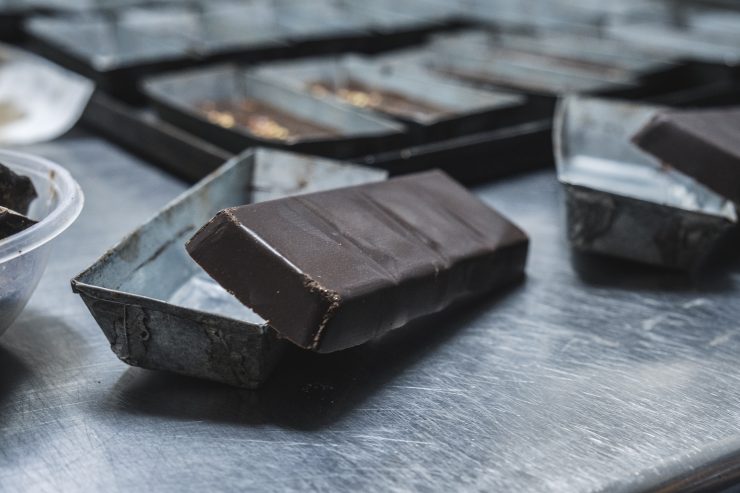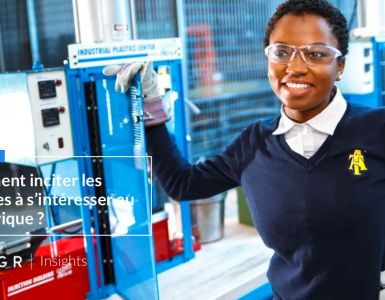The issues, and ways to overcome them, rely entirely on the unique scenarios that producers, wholesalers and retailers face. Chocolate manufacturers need to implement best practices that are capable of overcoming challenges at each echelon, since a typical production process for producing chocolate consists of multiple phases.
As the cocoa works its way through long supply lines and a careful manufacturing process, it is vital to identify some of the issues that have become critical factors for companies to operate in a safe and responsible manner. Before considering ways of boosting efficiency in their own process, companies need to ensure that their business practices are in line with the ethics that govern international trade.
Responsible cocoa sourcing
Over the years, most chocolate manufacturers have become increasingly dependent on West African countries for sourcing cocoa. In 2016, over 70% of the global cocoa production was from this region, with Ivory Coast and Ghana accounting for 60% of the total output. According to a survey done by Tulane University in 2015, there were 2.1 million children that were engaged in child labor, among which a staggering 96% were working in hazardous conditions that could have long-term effects on their health. Moreover, it is evident that almost all major market leaders in the North American chocolate industry have fallen short in fighting this issue in spite of being in business for several decades. Indeed, this situation has enabled chocolate companies to launch several initiatives, such as Mondelez’s Cocoa Life initiative and Hershey’s pledge towards being 100% sustainable by 2020.
With consumers being increasingly conscious about sustainability and fair trade, these are some of the key practices that could ensure responsible sourcing of cocoa:
- Regular third-party auditing and training of cocoa farmers
- Implementing technologies such as wireless sensors and mechanized farming to modernize operations. This could eliminate several hazardous jobs in the long-term
- Partnerships with NGOs and farmer communities for fighting extreme poverty
Although the scale of action by companies would be dependent on their size, it is surely possible to elevate the livelihood of cocoa producers through teamwork and collaboration. This could be a vital aspect in building a long-lasting brand with strong values.
Empirical models for control during roasting
Parameter settings during roasting are a vital factor in determining the final taste of the chocolate. Since this is an irreversible first step, companies need to be extremely careful in determining the right temperature and roasting time.
At this stage, the Maillard reaction produces compounds that impart the cocoa its distinctive flavor. While most small-scale producers rely on informal sensory methods by surveying the product for texture, taste, and consistency, this may not cover all the factors that would be useful to produce a standard product at higher volumes. Hence, it is vital to consider testing the chemical composition of the roasted nib pieces.
In the case of cocoa, the first major group of by-products during roasting are Pyrizines, that contribute to that unique chocolate aroma which consumers are familiar with. Another by-product, however, is Acrylamide, which is a known carcinogen. This is present in most foods that are cooked at a high temperature for a long period of time.
Some studies have attempted to achieve an ideal set of parameters using statistical methods such as Response Surface Methodology (RSM), but the optimal parameters are entirely dependent on the characteristics and origin of the cocoa beans being used. To add to the confusion, regulatory authorities such as the US FDA have not clearly mentioned the acceptable level of Acrylamide specifically for chocolate, which is why different chocolate bars have acrylamide levels that vary over a wide range.
Since the flavor and the possible health hazards are both dependent on the same process, it is critical to ensure those process parameters are optimized for allowing an ideal trade-off between the two. Small and medium-sized chocolate companies could avail the services of consultants and additional resources to analyze their roasting process at an early stage so that parameters can be standardized in the long run.
Product recovery during grinding and tempering
For reducing waste during any phase that processes liquid chocolate, a process known as pigging could be used. Through this process, the residual liquid within a pipeline can be recovered and used, rather than wasted during cleaning. While oil companies have been using this method for several years, it has since evolved into a fully automated technology that can be adapted to other industries as well. Automated pigging has been already been adopted among major producers such as Ghiradelli, Mondelez, and Nestle.
The results of automated product recovery have been well documented in process industries. However, smaller companies may still be compelled to use traditional cleaning methods for cleaning their equipment, since they are typically focused on maximizing their asset utilization with the equipment that they already have. However, product recovery technologies could be an integral aspect of reducing costs through wastage, while also enabling companies to minimize their downtime due to manual maintenance or cleaning
With this, we have an overview of what is a sustainable and efficient chocolate production line. In my next post, I will be giving some practical examples and best practices in the chocolate industry.






